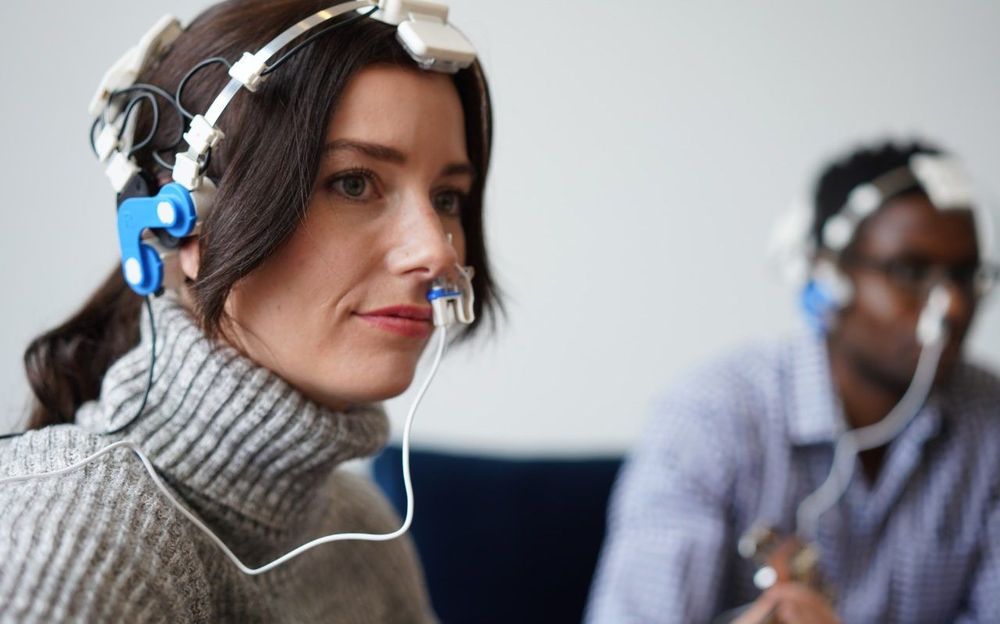Page 7235
Jan 6, 2020
With Monday night launch, SpaceX to become world’s largest satellite operator
Posted by Genevieve Klien in categories: internet, satellites

If all goes to plan, this mission will be just the first of as many as 20 Starlink launches this year as SpaceX builds up a constellation of satellites in low-Earth orbit to provide global Internet service. SpaceX may begin to offer “bumpy” service by the middle of this year to some consumers.
Following this next launch, scheduled for 9:19pm ET Monday (02:19 UTC Tuesday), SpaceX will have a constellation of nearly 180 satellites in low-Earth orbit, each weighing a little more than 220kg. This will make the company simultaneously the world’s largest private satellite operator (eclipsing Planet Labs), while also being the most active private launch company.
Continue reading “With Monday night launch, SpaceX to become world’s largest satellite operator” »
Jan 6, 2020
China publishes Chang’e 4 data one year after first landing on far side of the moon
Posted by Alberto Lao in category: space
Chinese officials marked the one-year anniversary of the Chang’e 4 mission’s historic first soft landing on the far side of the moon Friday with the public release of data collected by scientific instruments and cameras on the lunar lander and rover.
The Chang’e 4 lander and Yutu 2 rover landed together on the lunar surface Jan. 3, 2019, marking the first time a spacecraft has ever safely touched down on the far side of the moon.
Around 12 hours after touchdown, the Yutu 2 rover drove down a ramp to disembark from the Chang’e 4 mission’s stationary landing platform to begin exploring the barren lunar landscape.
Jan 6, 2020
The Ecological Challenge of Artificial Superintelligence
Posted by Aaron Vesey in categories: robotics/AI, sustainability
Does the hypothetical realization of artificial superintelligence pose unique challenges to systems ecology and environmental sustainability?
Jan 6, 2020
Strategies for the Digital Age Part 2 – Corporate Venturing
Posted by Alexandra Whittington in categories: business, futurism

The leadership challenge for all commercial organisations today is one of delivering continuous growth to their shareholders while trying to navigate an increasingly uncertain future and a world being transformed by dramatic advances in science and technology. There is also an underlying sense that we have to do everything faster – perhaps for fear that the opportunities may not last very long. In response, we are seeing the growing use of two key growth strategies — the quest for exponential growth and the growing use of corporate venturing. I discussed exponential growth in Part 1, and in Part 2 I focus on the learning and development implications of the adoption of corporate venturing.
Corporate venturing and intrapreneuring are seen as ways of buying ourselves faster learning and growth. As organisations wrestle with finding the right path to the future, we can expect a growing focus on the use of corporate venturing, or corporate venture capital. This is basically the investment of funds in external start-up companies. Intrapreneuring tends to be used to refer to investment in new venture ideas generated by internal team members. Typically, these venturing approaches are focused on capital and resource investments in firms and internally generated ideas that could enhance the core business, create enterprises in adjacent sectors, or generate ventures that could potentially disrupt and compete with the existing entity.
This business model may become increasingly popular as firms look to these startups to help speed up knowledge acquisition, learn about emerging technologies, accelerate entry to new markets, or access critical skills and resources. Core to the success of such models are intrapreneurs and venture managers who can help the ventures gain the support they need from the core business without the imposition of unnecessary central processes and controls. Alongside these venture management skills, success requires internal leaders and functional heads to have the ability to collaborate with new ventures which might threaten their existing business.
As the desire is typically to launch these venturing and internal incubator units at speed, a level of pre-emptive skills investment is required to establish the required structures and processes to manage the activities. Fast track approaches to learning here would include meeting with a range of such venture units in different organisations. These study tours can provide deep insight into the technical aspects of running venturing and how they have tackled the issues of securing internal support, ensuring accelerated decision making, and dealing with the conflicts that can arise as parts of the business feel threatened by the new initiatives and investments. Secondments to and from established venturing units and venture capital funds can also help with accelerated knowledge acquisition.
Continue reading “Strategies for the Digital Age Part 2 – Corporate Venturing” »
Tags: Corporations, digital age
Jan 6, 2020
Microsoft: RDP brute-force attacks last 2–3 days on average
Posted by Quinn Sena in category: cybercrime/malcode
Microsoft publishes insights into RDP brute-force attacks from months-long 45,000 PC study.
Jan 6, 2020
Doctors Are Trying to Use CRISPR to Fight Cancer. The 1st Trial Suggests It’s Safe
Posted by Quinn Sena in categories: biotech/medical, innovation
Preliminary data from an innovative clinical trial suggests CRISPR could be safe for use in cancer therapy.
Jan 6, 2020
How Alzheimer’s disease could be cured by shining light directly into the brain
Posted by Paul Battista in categories: biotech/medical, neuroscience
Alzheimer’s disease could be reversed by shining light directly into the brain through the nose and skull, scientists believe.
The first major trial to see if light therapy could be beneficial for dementia has just begun following astonishing early results which have seen people regain their memory, reading and writing skills, and orientation.
If successful it would be the first treatment to actually reverse the disease. So far, even the most hopeful drugs, such as Biogen’s aducanumab, have only managed to slow the onset of dementia, and many scientists had given up hope of reversing brain damage once it had already happened.
















